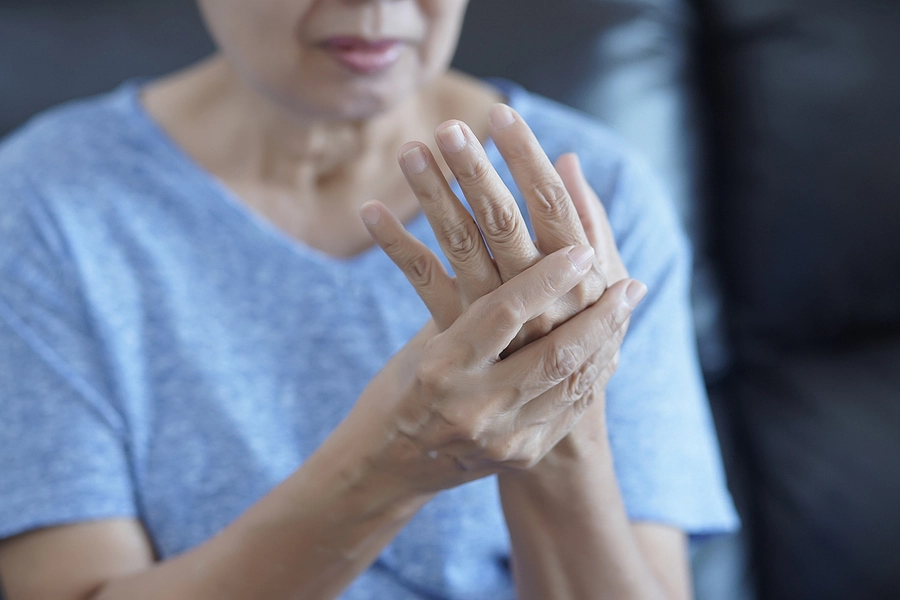- Bartlett Legal Group
- /
- Secondary Injury Claims for Veteran Benefits
Secondary Injury Claims for Veteran Benefits
At Bartlett Legal Group, we understand the service and sacrifice that comes with military life. We are dedicated to assisting you in navigating the often sluggish and complicated administrative process involved in seeking the VA disability compensation benefits you have earned.

At Bartlett Legal Group, we understand the service and sacrifice that comes with military life. We are dedicated to assisting you in navigating the often sluggish and complicated administrative process involved in seeking the VA disability compensation benefits you have earned.
One aspect of VA benefits that is particularly challenging but crucial for many veterans is secondary injury claims. These claims are vital for veterans whose service-connected disabilities lead to additional medical conditions.
As veteran disability claim lawyers, the team at Bartlett Legal Group understands how to operate efficiently and effectively to help our clients access the VA disability benefits they are entitled to. Schedule a free consultation with us by calling (850) 332-6434 or filling out our online contact form.

What Are Secondary Injury Claims?
Secondary injury claims refer to medical conditions that arise as a consequence of an already established service-connected disability. For example, if you have a service-connected back injury that leads to a chronic knee problem, the knee injury would be considered the secondary condition.
These secondary conditions can significantly impact your quality of life and require proper recognition and compensation from the VA. Common examples of secondary injuries that veterans can claim benefits for from the VA include:
Physical Injuries: Arthritis, chronic back pain, or mobility issues resulting from an initial service-connected injury.
Psychological Conditions: Depression, anxiety, or PTSD stemming from chronic pain, limited mobility, or other physical limitations due to a primary service-connected disability.
Other Conditions: Sleep disorders, digestive issues, or hypertension caused by medications taken for the primary injury or the stress associated with managing ongoing health problems.
Rules Governing VA Secondary Disability Claims
Under Title 38 CFR 3.310, service-connected secondary claims fall into two categories. The first category includes claims where an existing service-connected disability leads to a subsequent condition. For example, if a veteran’s service-connected diabetes results in an amputation, the loss of the limb should also be considered service-connected.
The second category, established by the 1995 Allen v. Brown court decision, involves claims where a non-service-connected disability is aggravated by a service-connected condition. This is known as a secondary service connection by aggravation.
For secondary condition VA claims, you will need medical evidence to demonstrate the baseline severity of the non-service-connected condition before it was aggravated or at the earliest point when aggravation could be measured. Medical records are crucial for these claims.
You must provide documentation of the current and prior severity levels of the secondary condition. The VA will request a medical examination to determine whether the aggravation is due to the service-connected disability. These assessments are known as Compensation and Pension exams, or C&P exams.
The examiner must provide a detailed report addressing the severity, causation, and supporting medical considerations. If sufficient evidence suggests that the non-service-connected condition is aggravated by the service-connected disability, a strong medical opinion might lead to a favorable VA decision. You can also submit a private doctor’s opinion to bolster the secondary condition VA claim.
Eligibility Criteria for Secondary Injury Claims
To qualify for VA benefits for secondary conditions, you must meet specific eligibility criteria. These include proving a direct connection between the primary service-connected disability and the secondary condition.
Service Connection Requirement
To qualify for VA benefits for a secondary condition, you must have an established service-connected primary disability. This primary condition must be recognized by the VA as directly related to military service. Additionally, the secondary condition must then be proven to have resulted from the primary disability.
Causation and Aggravation
Vets can claim secondary conditions if they are directly caused by the primary service-connected condition or if they are aggravated by it. Aggravation means that the primary service-connected condition has worsened the secondary condition beyond its natural progression.
Medical Evidence
Comprehensive medical evidence is critical to substantiate your secondary condition VA claim. This includes the following:
- Detailed medical records documenting both the primary and secondary conditions.
- Expert opinions from your healthcare providers establishing a clear nexus between the two conditions.
- Diagnostic tests and treatment histories that support the claim.
Documentation Requirements
All claims must be supported by thorough documentation. You should provide:
- A well-detailed medical history.
- Statements from treating physicians linking the secondary condition to the primary service-connected disability.
- Any relevant studies or literature that validate the connection.
Given the complexities involved in proving eligibility for VA benefits for secondary conditions, legal representation can be invaluable. The veteran disability denials attorneys at Bartlett Legal Group can help gather necessary evidence, craft compelling arguments, and navigate the VA’s system, thereby increasing the likelihood of a successful claim.
Common Types of Secondary Injuries Among Veterans
Veterans may experience various secondary conditions as a result of their primary service-connected disabilities. Recognizing these secondary injuries can help in adequately filing for the deserved benefits.
Physical Injuries
Many veterans suffer from physical injuries that stem from a recognized service-connected disability. For example, a knee injury sustained during service could lead to chronic back pain due to altered gait and posture.
The VA disability benefit claim attorneys at Bartlett Legal Group can help you prove that your physical injuries are a result of a service-connected injury.
Psychological Conditions
Psychological conditions are also common secondary injuries. Chronic pain or mobility issues resulting from a primary injury can lead to mental health challenges like depression, anxiety, or PTSD.
If you or a loved one is battling a mental health condition stemming from a service-connected primary injury, your VA claims lawyer at Bartlett Legal Group can help you make a successful mental health condition claim.
Other secondary conditions may include digestive issues caused by medications taken for the primary injury or sleep disorders resulting from chronic pain.

Steps to Filing a Secondary Injury Claim
Filing a VA claim for secondary conditions involves several detailed steps. It’s crucial to be thorough and precise to maximize the success of your secondary condition VA claim.
Step 1: Gathering Necessary Medical Records and Documents
Start by collecting all pertinent medical records related to both your primary service-connected disability and the secondary condition. This includes hospital records, treatment notes, and any diagnostic tests.
Step 2: Consult With Experienced VA Disability Claims Lawyers
Consulting with experienced VA disability claims lawyers is crucial for a successful secondary injury claim. These legal professionals have in-depth knowledge of VA regulations and can help navigate the complex claims process.
VA attorneys assist in gathering necessary medical evidence, crafting compelling claim statements, and ensuring all documentation is complete and accurate. An experienced lawyer can also represent you in veteran disability appeals if your initial claim is denied, significantly improving your chances of receiving the benefits you deserve.
Step 3: Filing the Claim with the VA
Submit your claim to the VA along with all supporting documentation. This should include a clearly written claim statement that outlines the connection between your primary and secondary conditions.
Tips for Writing a Strong Claim Statement
Be detailed and specific about how the secondary condition is linked to your service-connected disability.
Include all relevant medical evidence and expert opinions.
Clearly outline the impact of the secondary condition on your daily life and overall health.
How Are VA Secondary Conditions Calculated?
The VA uses the Veteran Affairs Schedule for Rating Disabilities (VASRD) to rate secondary conditions based on the severity of the injury or symptoms.
The VA uses a “combined rating table” to calculate the new VA rating when a Veteran has multiple disabilities. Just like with regular VA Ratings, ratings for secondary conditions are also in 10% increments, and the final value is rounded to the nearest 10%.
For example, let’s say your primary injury is a back injury, and it’s rated at 30%. Now, let’s say that your back injury has caused a knee injury, which is rated at 20%.
Let’s calculate with the back injury rated at 30% and the knee injury rated at 20%.
Calculating the VA Rating for a Secondary Condition Step-by-Step
1. Primary Condition Rating: The back injury is rated at 30%.
2. Secondary Condition Rating: The knee injury is rated at 20%.
3. Combining Ratings: The VA uses a “combined ratings table” to determine the overall disability rating. However, it can also be calculated in the same way they calculate the information found in the table.
4. Calculation Steps:
Step 1: Start with the primary rating (back injury), which should be the highest 30% disability rating for the back injury.
Step 2: Subtract the primary rating from 100% to find the remaining efficiency 100% – 30% = 70% remaining efficiency.
Step 3: Apply the secondary condition rating to the remaining efficiency *Remember the back injury was 20% 20% of the remaining 70% efficiency is calculated by:
20% of 70% = 0.20 * 70 = 14%.
Step 4: Subtract the secondary condition’s impact from the remaining efficiency
*Now, take the remaining efficiency from earlier (70%) and subtract the new rating
(14%) 70% – 14% = 56% remaining efficiency.
Step 5: Determine the combined disability rating
*Finally, subtract your new remaining efficiency number (56%) from 100%
The combined rating is 100% – 56% = 44%.
Step 6: Round the combined rating to the nearest 10%
The VA rounds to the nearest 10%, so 44% is rounded to 40%.
**Flashback to high school! If the new percent were 45, you would round up to 50%
Using the VA Combined Ratings Table
The VA Combined Ratings Table can also be used to verify this calculation:
Find the rating for the back injury (30%) in the left column of the table.
Move across the row to the column that corresponds to the secondary condition rating (20%).
The intersection of the row and column provides the combined rating.
Using the table ensures accuracy, but the above steps provide a clear understanding of how the ratings are combined.
Challenges in Secondary Injury Claims
Filing for secondary VA injury claims can be challenging. Understanding these challenges and how to address them can make the process smoother.
The most common issue that veterans face is extensive delays in processing their claims or outright denials, often due to insufficient medical evidence or incomplete documentation. Consulting with a VA disability benefits claims lawyer can mitigate these challenges by ensuring all necessary documents are accurately prepared and submitted.
Your VA disability benefits attorney can help gather comprehensive medical evidence, craft a compelling VA claim for a secondary condition, and effectively communicate with the VA on your behalf. Their expertise can significantly reduce processing times and increase the likelihood of a favorable outcome.
How Bartlett Legal Group Can Help
At Bartlett Legal Group, helping veterans isn’t just a profession; it’s personal. As an office of veterans and military spouses, we understand service and sacrifice and are dedicated to serving you. We offer thorough case evaluations, gather robust medical evidence, and provide expert legal representation throughout the claims process. With Bartlett Legal Group, you will gain the following benefits:
Seasoned Veteran Advocates
Bartlett Legal Group is your veteran benefits advocate. We provide expert legal guidance to navigate your secondary condition VA claims, ensuring you receive the full disability benefits you deserve for both mental and physical service-related conditions.
Veteran Disability Denials
If your veteran disability claim has been denied, we help you understand and address the reasons for denial, fortifying your case to maximize success. Our firm has a proven track record in successfully overturning denials, leveraging our in-depth knowledge of VA regulations and procedures.
Veteran Disability Appeals
For appeals, we guide you through the process, offering support with additional evidence submission and navigating the review system to secure VA benefits for a secondary condition.
Our meticulous approach and personalized service make Bartlett Legal Group the best team of VA disability claims attorneys. We are steadfastly committed to achieving the best outcomes for our clients.
Call Bartlett Legal Group Today To Book Your Free Consultation
If you need assistance with your secondary injury claim, don’t hesitate to contact Bartlett Legal Group today by calling (850) 332-6434 or submitting this appointment form to book your free consultation. Let us help you secure your VA disability benefits so you can move forward with the support you deserve.






